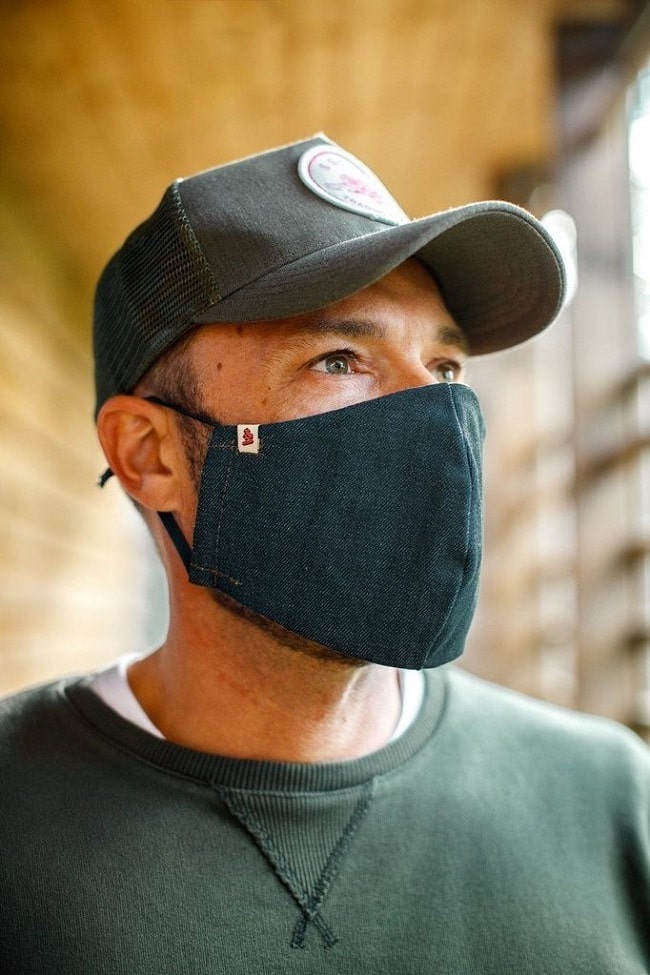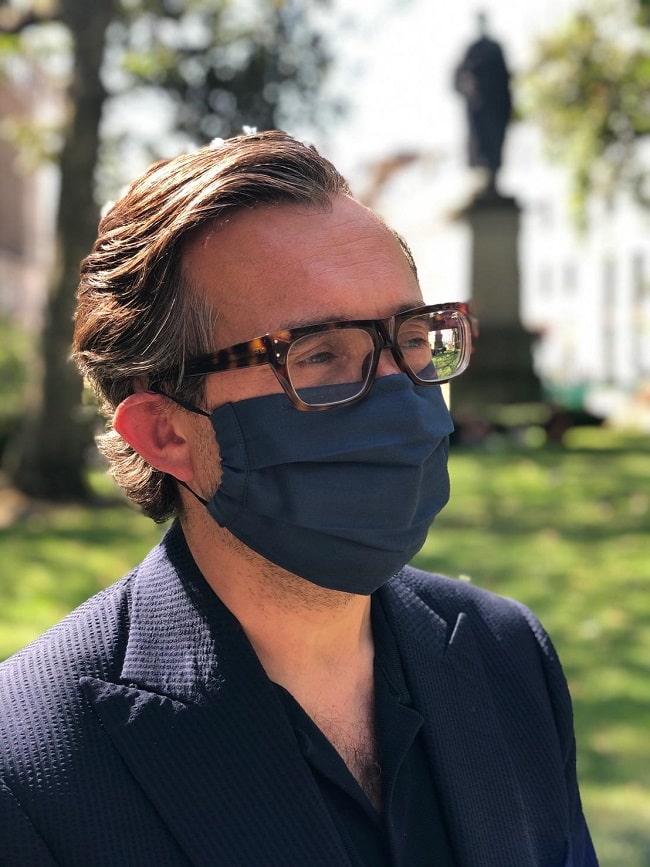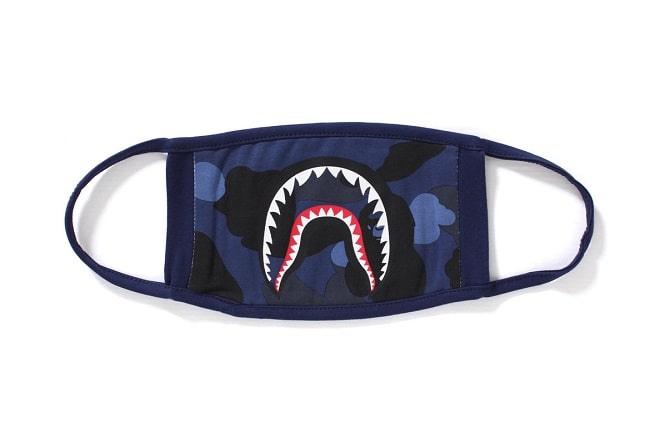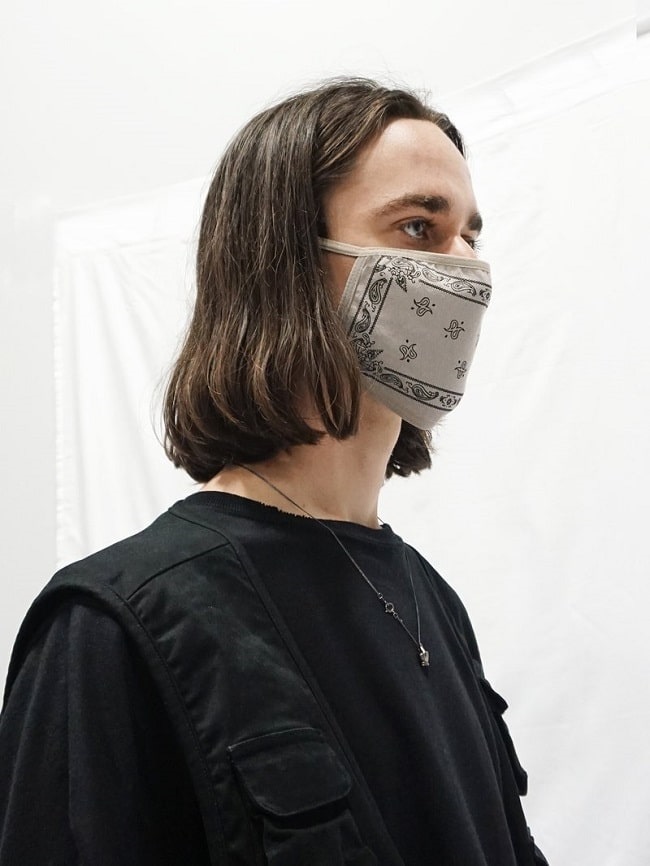1
HOME > Trends >
WHY THE LUXURY FACE MASK ISN’T GOING ANYWHERE
Written by Ivan Yaskey in Trends on the 6th July 2020

From 2019 into 2020, the harness looked like menswear’s must-have accessory. Of all the styles with a varying degree of impracticability, this item fitting over a shirt (or just worn by itself, a la Depeche Mode’s Martin Gore) or with a suit embodied peak flamboyancy. It was extra in ways we haven’t seen men’s style get on the red carpet and seemed to pave the way for other showy, not-quite-peacocking trends.
Then, the western world recognised the Covid-19 pandemic sometime in March. All of the statistics of how shutdowns and quarantines have affected all areas of business, including retail and fashion, are out there. And, High Street to runway brands that would’ve turned their attention to designing and manufacturing a new collection of clothing – Christian Siriano, Zara, Gucci, Louis Vuitton, H&M, Prada, Ralph Lauren, and Brooks Brothers among them – used their facilities to up the production of surgical and non-surgical face masks to help out healthcare personnel who, across the globe, have seen personal protective equipment (PPE) shortages.

Louis Vuitton even pledged to manufacture 100,000 face masks per week, along with hospital gowns, by reopening 12 of its 16 leather production facilities and utilising a sizeable part of its workforce to do so. As the other side of this coin, western countries that would have scoffed at the idea of wearing face masks and whose citizens were initially resistant to don them back in March have come around. Especially as face masks, whether surgical or non-surgical, weren’t easy to come by during the early days of the pandemic, brands have stepped up their production and started selling them online. With this availability (and the strangeness of still not being able to find non-surgical varieties at the local pharmacy), luxury and statement face masks have taken over what the harness could’ve been while offering a far more practical alternative that likely won’t disappear by the end of the year. With a Covid-19 vaccine still being a distant possibility, here are some of the reasons luxury face masks could catch on:

They’re Required
In the UK, anyone wanting to take public transit needs to be wearing a face mask, while certain shops are refusing customers who don’t put on a face covering. In the US, the Centers for Disease Control and Prevention (CDC) finally relented after years of alleging face masks are ineffective for preventing the spread of disease. In turn, certain states now require the use of face masks in public, with storefronts posting reminders for customers and denying service to individuals who fail this basic protocol. In turn, at least in the foreseeable future, if you need to shop for groceries or go any place where you’ll be around other human beings, you’re expected to wear a face mask. It’s a baseline effort and the least anyone can do if you’re deciding to leave your home.

The Market Already Exists
While the western world is suddenly discovering face masks (and all the colours and patterns available), a market for this supply has existed for more than 15 years in East Asia. Part of that demand is driven by air pollution, but as a more significant force, the area still recalls the severe acute respiratory syndrome (SARS) outbreak in 2002 and 2003. In Hong Kong alone, nearly 300 individuals died from SARS. Because SARS easily spreads through airborne respiratory droplets, wearing a mask greatly reduces the incidence of infection. In turn, face masks aren’t just a lifesaver for a possible pandemic; wearing them, rather, is considered basic social politeness during cold and flu season. Particularly in the US, however, the message that face masks won’t stop virus transmission has persisted since the early 2000s, if not longer. It had long been detailed that, since the masks don’t fit tightly around the nose and chin, droplets can still escape and infect others. Added to this, explained in detail in a Time magazine writeup, wearing a mask in public in the US has symbolised sickness – which itself leads to others wondering why you aren’t staying at home away from them or, worse, invites harassment. Especially considering the dire shortage of PPE at hospitals, they also symbolised selfishness early on in the Covid-19 pandemic: if you’re wearing one, why didn’t you donate it to hospital personnel or other essential workers?

Variety is Out There
Face masks are now like socks: you can pick up a plain, perfectly practical pair, or you can make a statement with prints and bold colours. Especially as clothing brands and tailors such as Profound and Caroline Andrew have taken to creating their own, you have options with ruffles, ribbon, silk, tie-dye prints, or upcycled materials. Initially, western consumers were left to their own devices: even the New York Times included a pattern for stitching a mask, while craft store Jo-Ann Fabrics sold mask-making kits that, due to the quality of supplies, were later deemed ineffective. Not everyone has a sewing machine available (or the supplies to craft a semi-effective mask), so brands both accessible and inspirational started releasing their own:
Guess played it straightforward with an accessible line of cotton jersey masks for adults and children. Part of the proceeds from all masks sold go towards non-profit Homeboy Industries, an organisation striving to reduce gang violence and rehabilitate former gang members.
3.1 Phillip Lim has been carrying mask bundles, sold in sets of five or 10 for children and adults. Along with cloth, masks include antibacterial Fuze Pathogen Control technology to further block out particles and microorganisms. As with Guess, the fashion brand is donating proceeds from the sale of face masks toward Apex for Youth.
Off-White played their face mask game on brand, with a solid black design featuring their recognisable “X” logo. As with high-end streetwear brands, however, Off-White face masks soon became a hot commodity, with resale prices hovering around $1,000 per mask (the original was priced at $95).
J. Crew and Madewell have realised that consumers are looking to coordinate their mask with their clothing. J. Crew, as such, created masks out of its blue and striped shirt fabrics, and Madewell has crafting theirs out of excess fabric.
Marine Serre, the LVMH Prize-winning womenswear brand that has since branched out into menswear, launched its own top-selling mask, the X Airinum Urban Air Mask 2.0, featuring the designer’s recognisable crescent moon motif and air filters.
Based on figures from digital retail trend tracker Edited, fashion brands were offering 40-percent more masks in early 2020 than they did at the end of 2019.

Consumers Want Them
In the time-tested way trends begin, celebrities have been spotted in face masks – most notably, Billie Eilish in a Gucci mask at the Grammy Awards in January. A couple of months before, merch at Ariana Grande’s Thank You Next Tour included branded face masks. Lyst’s own product index found that, during the first quarter of 2020, searches for face masks surged nearly 500 percent. Predictably, the Off-White face mask experienced the greatest demand. Etsy’s CEO Josh Silverman also noted that in 2020 the site has been experiencing a significant number of requests for face masks: an average of nine related searches per second. Whether those are consumers who just want any face mask or those who want a more fashionable variety, StockX noticed that luxury, streetwear-branded face masks have officially entered the resale market, particularly those from BAPE and Off-White. Attesting to the presumed-to-be-dormant power of the hypebeast, StockX saw 75-percent more sales and 80-percent more sales volume for face masks, and consumers using the platform were spending 167-percent more on this commodity.

Trending
2
3
4
5
6
7
8
9
10










